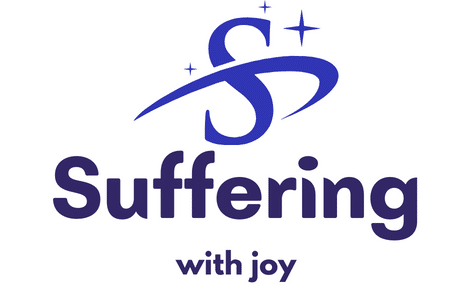In a world where medicine and technology are continuously advancing, Pediatric Oncology has been a challenging frontier, with children grappling with the harsh realities of cancer. The toll it takes on these young patients exceeds the physical; it also extends to their mental and emotional health. In response to this, the medical community has been exploring various interventions to complement traditional medical approach and improve patient outcomes. One such intervention that has shown promising results is the animal-assisted therapy (AAT). This emerging therapeutic approach involves interaction between a patient and an animal with the aim of improving the patient’s emotional and psychological state.
Understanding Animal-Assisted Therapy
Pet-assisted therapy, or more formally known as Animal-Assisted Therapy (AAT), is a therapeutic intervention that incorporates animals, such as dogs, in the treatment plan. The goal of AAT is to improve a patient’s social, emotional, or cognitive functioning. Numerous studies have reported the benefits of AAT in various health care settings, but its role in pediatric oncology is particularly noteworthy.
A découvrir également : How Does the Incorporation of Probiotics in Hospital Meals Affect Patient Recovery?
AAT involves different activities, which can range from simply petting or grooming the animal to more structured therapeutic exercises under the supervision of health care professionals. The animals used in AAT are carefully selected and trained to ensure they can safely interact with patients.
Impact of AAT in Pediatric Oncology
In pediatric oncology, children are faced with a complex and overwhelming health challenge that not only affects them physically but also emotionally and psychologically. The hospital environment can be alienating and intimidating for children. This, in turn, can lead to feelings of loneliness, anxiety, and depression.
Cela peut vous intéresser : What Are the Health Benefits of Forest Bathing for Urban Residents?
AAT has shown potential in addressing these challenges. A study published in the PMC (PubMed Central), a free full-text archive of biomedical and life sciences journal literature, showed that AAT could help reduce anxiety and improve mood in pediatric oncology patients. The interaction with the animals provided a sense of comfort and companionship. It allowed the children to momentarily forget about their illness and enjoy a semblance of normalcy.
Moreover, another study indicated that AAT could also improve the children’s response to treatment. Children who participated in AAT sessions were more willing to cooperate and engage in their treatment. Their pain perception was reported to be reduced, and they showed an overall improvement in their quality of life.
The Role of Parents and Health Care Providers
Parents play a crucial role in the care and treatment of children with cancer. The introduction of AAT as a therapeutic intervention can be a new concept for many parents. Therefore, it’s essential that health care providers clearly explain the benefits and safety precautions associated with AAT.
Parents may have concerns about the risk of infection from animals, especially considering their child’s weakened immune system due to cancer treatment. By referencing studies and guidelines, such as the ones available on Google Scholar, health care providers can reassure parents about the safety and effectiveness of AAT. Parents should be involved in the decision to incorporate AAT into their child’s care plan.
Training and Selection of Animals for AAT
The animals, particularly dogs, used in AAT must undergo rigorous training and screening to ensure they can interact safely with patients. They should have a calm and friendly demeanor and should be capable of handling various situations in a hospital setting.
Organizations that train therapy dogs need to ensure that these animals are free from diseases that could potentially be transmitted to patients. Regular veterinary check-ups are essential to maintain the health of these therapy animals. Special attention is given to their grooming to minimize the risk of allergen exposure to patients.
In conclusion, the incorporation of AAT in pediatric oncology is a promising development that could significantly improve patient outcomes. It offers the potential not just to enhance the children’s response to treatment but also to make their hospital stay more comfortable and less intimidating. As we continue to explore and understand the benefits of AAT further, it is pivotal that we keep in mind the safety and well-being of both the children and the animals involved.
The Significance of Data Collection and Analysis in AAT
To effectively evaluate the impact of animal-assisted therapy on pediatric oncology patients, reliable data collection and thorough analysis are essential. These allow health care providers and researchers to quantify the benefits of AAT and further optimize its implementation in the hospital setting. Multiple studies available on platforms like Google Scholar detail the various methods used to collect and analyze data in this field.
The data collection process often involves monitoring the patients’ physical and emotional responses during and after AAT sessions. This data is then analyzed to identify patterns and trends that could indicate the efficacy of the therapy. For instance, reduced levels of anxiety, improved mood, and increased willingness to cooperate during treatments are signs that AAT is beneficial.
In addition to patient responses, the behavior of therapy dogs during AAT sessions also provides valuable data. These animals’ reactions can give insight into the effectiveness of their training and their suitability for the role.
Moreover, feedback from parents and nursing staff is also a crucial part of data collection. Their observations and experiences can provide a unique perspective on the impact of AAT on the child’s hospital stay and overall cancer journey.
Promoting AAT in Nursing and Medical Education
To ensure that animal-assisted therapy is effectively integrated into pediatric oncology, it is crucial to promote its understanding and implementation in nursing and medical education. By incorporating AAT in the curriculum, future health care professionals can be better equipped to utilize this intervention in their practice.
Nursing and medical students should be educated about the principles and practices of AAT. They should understand the selection process for therapy animals, appreciate the role of these animals in the health care setting, and be aware of the safety precautions to follow.
There are numerous articles published on PubMed and available on Google Scholar that provide valuable information on AAT. These free articles can serve as excellent resources for students and educators alike.
The human-animal bond is a powerful tool that can be leveraged to improve the quality of life of children with advanced cancer. As such, it is time for AAT to be recognized as a legitimate and valuable aspect of pediatric oncology care.
Conclusion
Pediatric oncology is a challenging field, and the children in this situation need all the support they can get. Animal-assisted therapy has shown the potential to improve the quality of life of children with cancer substantially. It has the unique ability to bring comfort, joy, and a sense of normalcy to these children during a particularly difficult time in their lives.
However, to harness the full potential of AAT, it’s necessary to have a comprehensive understanding and implementation of it in pediatric oncology care. This involves proper education of health care providers, rigorous training of therapy dogs, reliable data collection and analysis, and the involvement of parents in the care plan.
In conclusion, AAT is more than just a pleasant distraction for children in the hospital. It’s a therapeutic intervention that can improve patient outcomes in pediatric oncology significantly. As we continue to refine and enhance its implementation, the positive impact of this therapy on children with advanced cancer will only increase.











